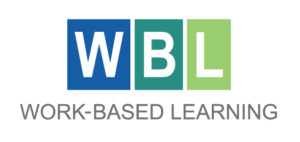
Work-based learning (WBL) is getting increased attention and gaining a fresh look in schools. WBL has always been a learning strategy in career education. The opportunity to learn from professionals in a real workplace with authentic materials and customers is the oldest form of career learning. However, over the last several decades, WBL has been an afterthought as Career and Technical Education focuses on building laboratories, preparing and certifying teachers, and requiring accountability with technical assessments and credentials. All of these efforts have greatly improved the quality of CTE as a more popular and successful learning pathway in K-12 schools.
Greater interest in WBL is occurring for several reasons. First, there is greater interest in CTE in general because students seek more contextual learning, and simply continuing to college without a career goal can be an expensive waste of money. WBL provides a less expensive option for expanding CTE, which has little need for facilities and difficulty recruiting CTE teachers. Further, the diversity of careers and sophistication of technology make operating dozens of programs cost-prohibitive. The environment for expanded WBL is very positive.
In a survey conducted by American Student Assistance, 79 percent of high school students expressed interest in participating in work-based learning experiences, but only 34 percent were aware of any opportunities within their age group. A report, K-12 Work-Based Learning Opportunities: A 50-State Scan of 2023 Legislative Action, by American Progress, highlighted the array of WBL state initiatives such as promoting increased access to and equity for learning opportunities, amending youth labor laws, providing dedicated funding for WBL, establishing private-public partnerships, and strengthening program requirements and data reporting. Thirty-four states now use work-based learning in their size, scope, and quality definitions for CTE-required accountability.
Education data has many purposes and audiences and WBL data needs a fresh look. WBL is an instructional unique form, and the data measured in CTE are not necessarily effective with WBL. Three important data uses to consider with WBL are improvement, advocacy, and accountability.
WBL data improvement differs from other CTE instruction because employers provide the instruction, and teachers/administrators have little direct observation of student work. More data must be collected to decide the scope of student learning and where and when improvements should be made. This demands greater use of technical and work habit descriptions and student portfolios describing work.
WBL advocacy data is also different because administrators cannot observe student engagement and learning in school labs. Student learning is a partial answer to convince school leaders of the value of WBL, but also testimony and perceptions of employers are important external advocates for WBL. In addition, WBL hours can be converted to dollar value as an economic impact of how important WBL is to the community.
WBL accountability is often superficially measured in hours completed. This is a convenient measure, but additional data needs to be collected on the type of WBL. For example, job shadowing hours are a very different learning achievement than operating a CNC manufacturing lathe.
I am thinking about WBL and data since I will be presenting on the topic next week at the ACTE Region 1 conference in Manhattan. I prepared a paper on WBL Data Practices, which is available online for download. As CTE grows in schools and work-based learning expands, we need to simultaneously enhance data collection and use.
